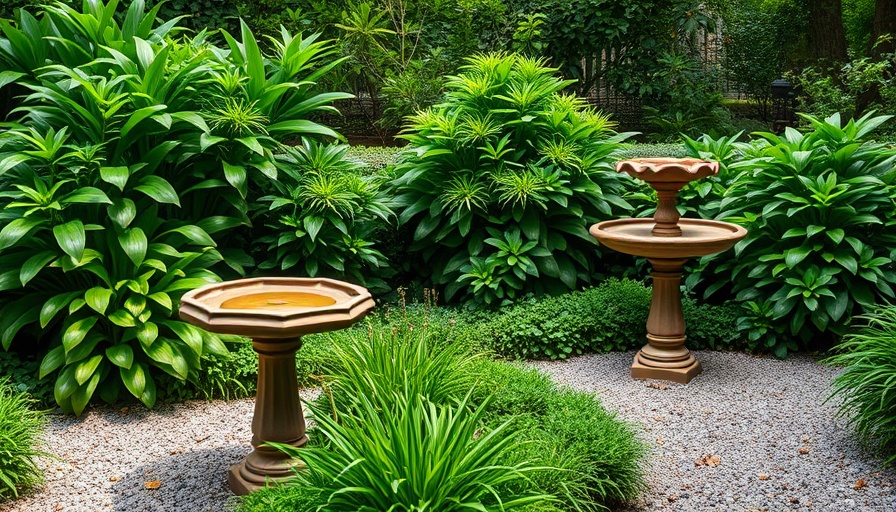
Understanding Veronica: A Garden Staple
When it comes to adding verticality and color to your garden, veronica plants stand out as a preferred choice for many gardeners. Known for their rich history and diverse family, veronicas boast over 500 species, ensuring that there's something for every outdoor enthusiast. Whether you lean towards striking blue blooms or simple white flowers, veronicas promise aesthetic appeal paired with functionality.
The Varietals of Veronica
Veronicas can be categorized into several types based on their growth habits and flowering characteristics. For trendsetters, there are low-growing species like Veronica peduncularis ‘Georgia Blue’ that serve as spectacular ground covers, offering a cascade of color without overwhelming other plants. Conversely, the more robust varieties such as Veronica spicata ‘Novaversky’ shoot up to impressive heights of 12-14 inches, making them prime candidates for vertical gardens and containers.
Color That Attracts
From blue and purple to pink and white, the colors of veronicas can transform any garden space. These vibrant flowers don’t just bring beauty; they attract pollinators, playing a vital role in sustaining local ecosystems. Pairing them with complementary spring-blooming bulbs like daffodils or tulips, or mixing them with summer staples such as salvias or dahlias, can create a lively tapestry in your outdoor space.
Care Tips: Keeping Mildew at Bay
Despite their allure, veronicas can fall victim to mildew, particularly if air circulation is poor or soil drainage is neglected. Gardeners must remain vigilant: avoid overcrowding, and refrain from excessive watering. If issues arise, a simple solution can be crafting a yogurt and water spray to combat mildew organically. Remarkably, some strains like the ‘Vernique’ series are bred for resistance, making them ideal for the less experienced gardener.
The Fascinating Name of Veronica
Curious about why these plants are called veronica? One popular theory links their name to Saint Veronica, who is said to have dried Jesus’ face with her veil, resulting in an imprint of his visage. This connection imbues the flower with a poignant significance that echoes through history, connecting gardeners not just to their plants but to a narrative stretching across centuries.
Integrating Veronica into Your Garden Design
Whether you’re looking to enhance a border, fill in containers, or create a striking cutting garden, veronica's versatility is unmatched. With numerous options available, it’s essential to assess the size and color of the veronica varieties that best complement your chosen plants. The tall spikes of certain varieties intermingle beautifully with dresses of zinnias or dahlias while also contributing movement to static arrangements.
The Emotional Impact of Gardening
Gardening is not merely an activity; it’s an emotional experience that connects people to nature and fosters mental well-being. Integrating veronicas into your backyard can enhance this connection, offering not just visual pleasure but also serving as a reminder of the rich stories each plant carries. These plants become a living narrative that we can cultivate, cherish, and share with others within our communities.
Why Every Gardener Needs Veronica
If you have yet to embrace veronica in your garden, you’re missing out on a plant that boasts beauty, diversity, and resilience. These hardy plants not only enhance the aesthetic of any garden design but also encourage biodiversity by attracting pollinators. Plus, with proper care, veronicas can thrive and reward you with boisterous blooms season after season.
Conclusion: Plant Your Own Veronica Today!
The time has come to expand your garden horizons! Delve into the vibrant world of veronicas and let them provide the perfect combination of beauty and functionality. Embrace these plants, and you’ll discover a new favorite among your garden favorites!
 Add Row
Add Row  Add
Add 




Write A Comment